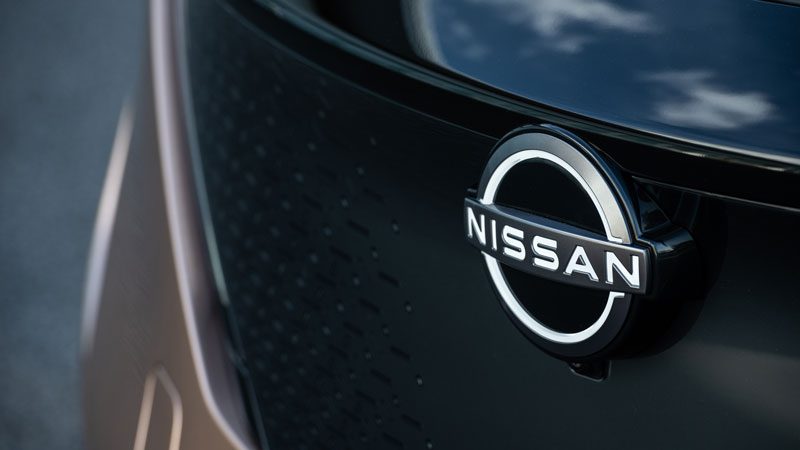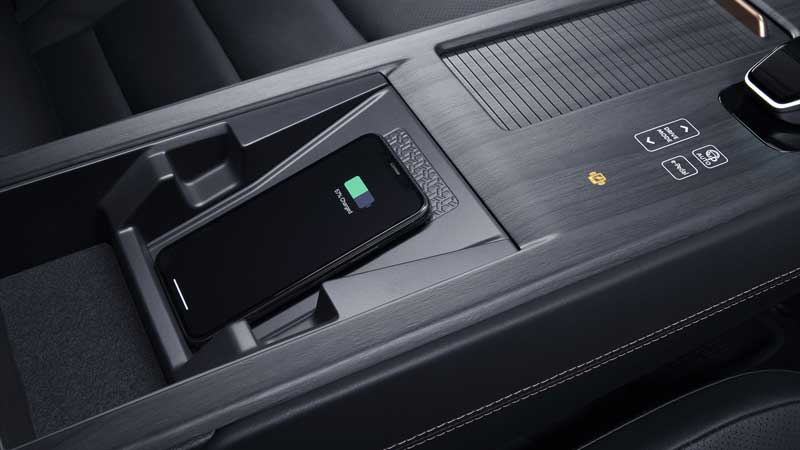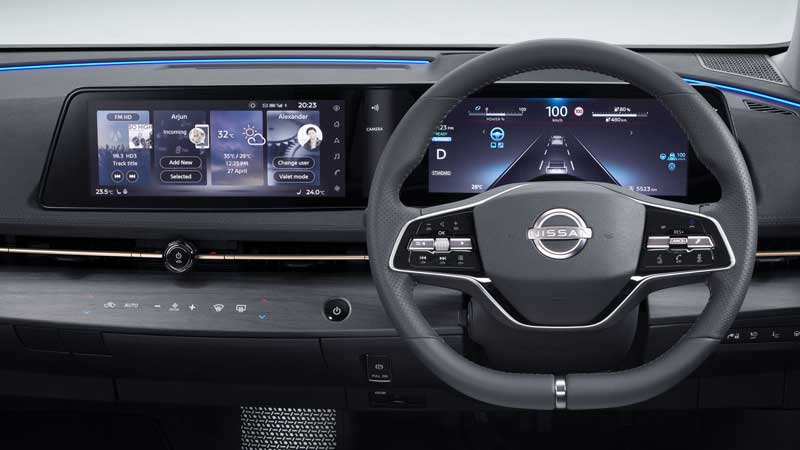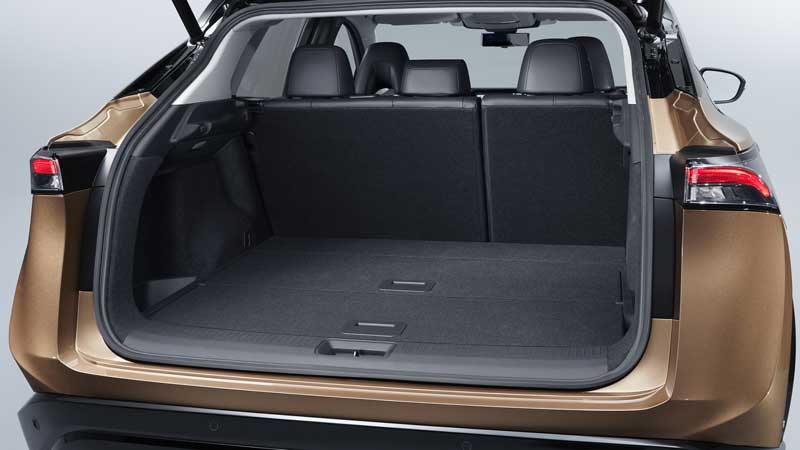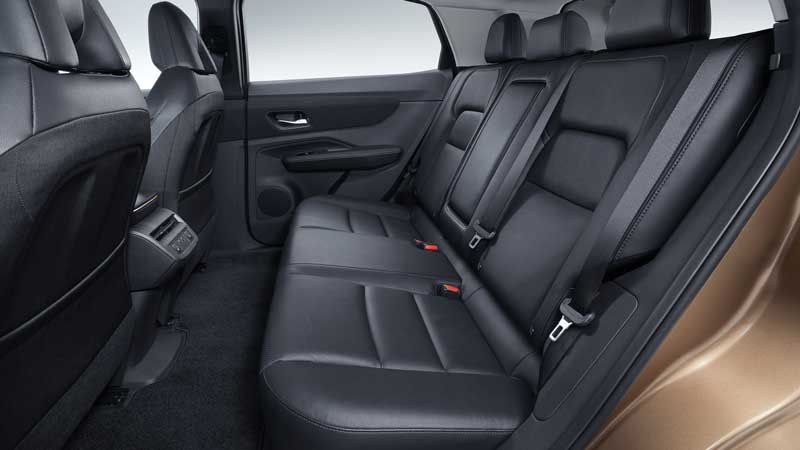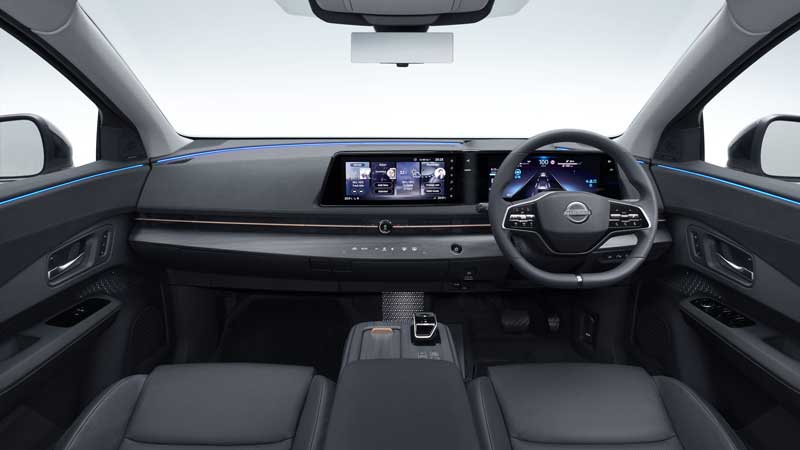Driving past a backdrop of cherry blossoms into a digital future, the new Nissan Ariya – the Japanese car maker’s first electric crossover – glided onto a stage in Tokyo before an online global audience on Wednesday.
First revealed as a concept at the Tokyo Motor Show in 2019, the Nissan Ariya doesn’t disappoint. It’s so similar to its concept version, visually, that it almost seems as if we’ve driven it before, but this couldn’t be further from the truth.
Priced in Japan from around 5 million yen ($A66,581 converted, Nissan will start production of the Ariya this year, and given it is Nissan’s first new all-electric model aimed at the consumer market since the Leaf was launched a decade ago, it won’t be a moment too soon.
The Ariya is a car that “enriches your life and enriches society,” and that is “resilient, inclusive and seamless,” said Nissan CEO Makoto Uchida at the event.
Available in a rear-wheel drive and all-wheel drive, with acceleration from 0-100km/hr in 5.1 seconds – on par with Nissan’s 370Z sports car – it is a step above Nissan’s popular but conservative Leaf.
But it is the battery options – and in turn, the car’s range – that have us excited.
Along with a choice of drivetrains, the Ariya will be offered with two battery sizes – a 63kWh (usable capacity) battery which will deliver 160kW power and 300Nm torque for 450km driving for the two-wheel drive model (all based on Japan’s WLTC cycle), and 250kW output for 560Nm torque, offering up to 430km driving range for the 4WD option.
That’s already a good 140km or so more driving range than the 40kWh Leaf (the only option currently available to buy new in Australia).
But it gets better. Choose the 87kWh (usable capacity) battery option and two-wheel drive models promise to deliver up to 610km driving range with 178kW/300Nm, or 580km driving range with 290kW/600Nm for the dual motor option.
It’s a level up in terms of range, and if Nissan can see its way to making the larger battery option available here (Nissan Australia says it is definitely putting a word in for local availability), it will mean it will be the only electric SUV on the Australian market with a longer driving range than the Tesla Model X, and the only other electric SUV-style vehicle with a driving range in excess of 500km.
However whether this range – and battery life – will prove on the money is yet to be seen. Nissan has copped criticism about its software-based approach to cooling the Leaf battery in the past, but for the first time Nissan is using a liquid-cooled batterythat will have a top charge rate of 130kW (under Japanese specifications).
In addition to the impressive range and the possibilities of V2G/V2H, the Ariya takes the SUV experience up a notch.
Chief operating officer Ashwani Gupta describes the Ariya as the perfect combination of Nissan expertise between electric vehicles and crossover SUVs, and given the success of Nissan’s Xtrail this seems a reasonable description.
For the 4WD drive variant, “E-4orce,” technology means that twin motors deliver instant torque to four wheels, resulting in a balanced but responsive ride that is the perfect combination between “powerful performance and confident control,” says Uchida.
The Ariya will come with Nissan’s ProPilot 2.0 for a hands-free driving experience (noting that, for now, this is only confirmed for a Japanese market). And in line with its motto of “omotenashi in motion” (which means hospitality but for Nissan translates to going beyond customer expectations), the interior embraces the feel of a spacious cafe lounge.
Mindful that its ProPilot 2.0 technology will offer a future of hands-off driving, the in-floor battery has allowed Nissan’s designers to open up the front cockpit floor space, resulting in oodles of leg space for those moments of relaxation in traffic.
Keeping with its promise of seamless connectivity, Nissan has also added Amazon Alexa to its suite of high-tech goodies; for example, all one has to say to Alexa (via your smartphone app) is, “Check battery status” and your screen will, from the comfort of your home, tell you how full the battery is and how many kilometres range you have left.
Firmware updates for the Ariya will be done, as with Tesla electric cars, over the air – a direction many car makers are now heading in, and which hopefully includes potential improvements such as increased efficiency and range, for example.
As with the Leaf, Nissan’s ePedal driving technology means drivers can use just one foot to start, accelerate and decelerate to bring “driving with ease and excitement” to the SUV set, as Gupta puts it.
On the exterior, the “muscular yet streamlined” style is easy to swallow; and with Nissan’s new, futuristic logo at the front sitting atop a new vehicle-wide running light, the intention is clear: this is the future of Nissan. Electric, exhilarating and elevating.
Correction: This article has been updated to reflect the Ariya uses a liquid-cooled battery and may not include V2G capabilities.

Bridie Schmidt is associate editor for The Driven, sister site of Renew Economy. She has been writing about electric vehicles since 2018, and has a keen interest in the role that zero-emissions transport has to play in sustainability. She has participated in podcasts such as Download This Show with Marc Fennell and Shirtloads of Science with Karl Kruszelnicki and is co-organiser of the Northern Rivers Electric Vehicle Forum. Bridie also owns a Tesla Model Y and has it available for hire on evee.com.au.



